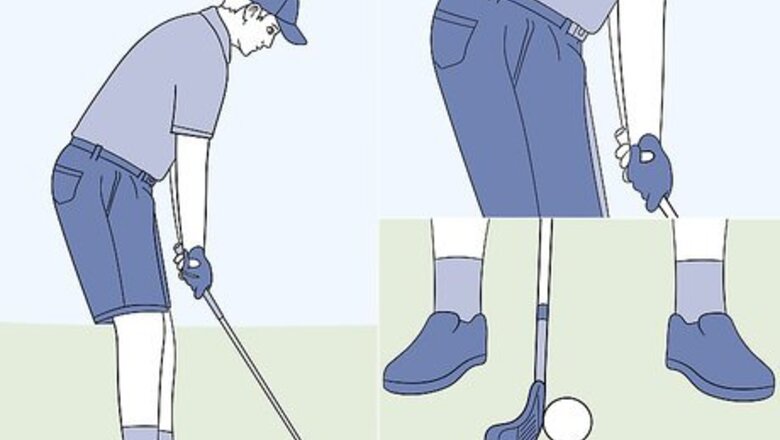
views
Adjusting Your Swing Posture
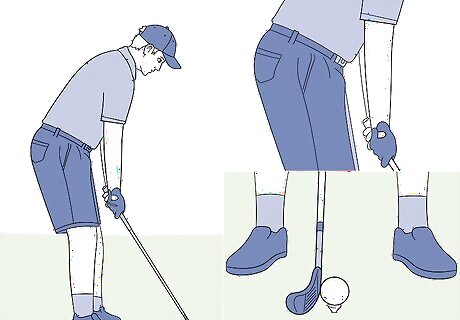
Keep your club fully extended in front of you. Place the head of the club behind the ball and hold the grip near the end of the shaft. Walk backward away from the ball until your arms are nearly straight and so the club head doesn’t move. Keep your feet slightly wider than your hips so the ball is either in the middle of your feet or closer to your front foot. Standing farther away from the ball increases the distance the club head travels, which allows it to build up more speed and power when you take your shot.
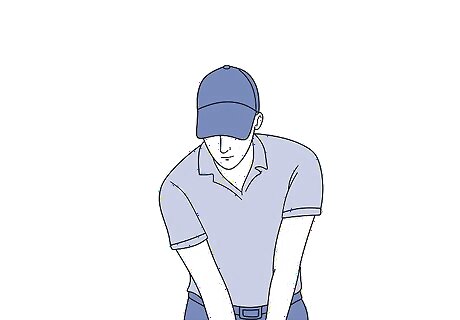
Relax your shoulders before you start your swing. Tight shoulders limit the amount of power you can get during your swing since it restricts your range of motion. If you feel tense around your shoulders, let your arms hang down and shake them slightly to remove any of the tension. Keep your shoulder muscles relaxed while you’re preparing your swing so you can reach your full power during your backswing. Sometimes, a tight grip on the club can make you tense up your shoulders. Try letting go of the club and grabbing it again slightly looser.
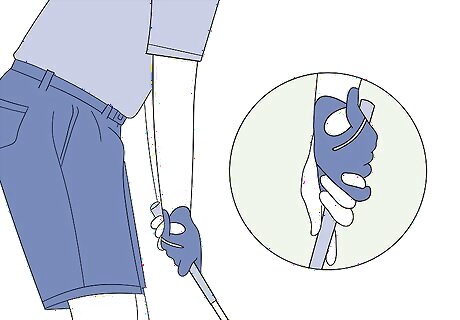
Loosen your grip on the club so you aren’t too tight. A tight grip can make your arms and shoulders tense and restrict your range of motion while you’re swinging. Let go of the golf club and reposition your hands on the grips. Squeeze the club loosely so it’s secure in your hands but not so tight that your arms have tension. Practice a slow backswing to see if the club moves or shifts at all. If the grips on your clubs are worn out, replace them so you don’t have to hold onto your club as tightly.
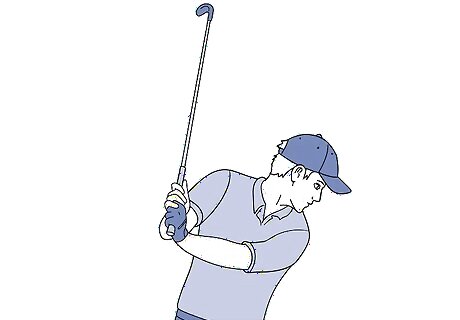
Twist your hips to bring the club back as far as you can on your backswing. Keep your eye on the ball as you rotate your hips and shoulders away from the hole. Bring your front shoulder directly below your head so your chest and hips point away from the direction you’re hitting the ball. Bring the club back behind your head as far as you’re comfortably able to get your full range of motion. Keep your feet firmly planted on the ground during your backswing since it could affect your overall posture. While you’re practicing, stop at the top of your backswing to see where the club head is positioned. Make sure it’s near parallel to the ground.Tip: Practice your range of motion by standing with your back to a wall as if you’re about to swing a golf club. Rotate your shoulders and hips like you’re doing a backswing and place your palms flat on the wall as far as you can comfortably reach. This should be how far you extend your arms back when you’re swinging a club to get the most power.
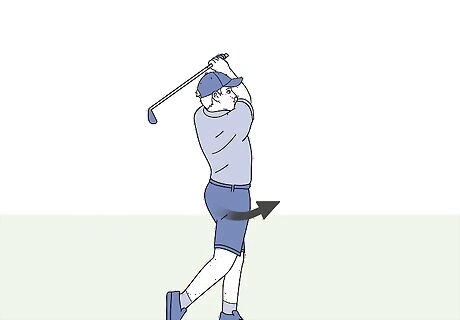
Shift your weight to your front foot as you make your forward swing. Your body weight will be focused on your rear leg while you’re at the peak of your backswing. As soon as you start bringing the club forward again, transfer your weight to your front foot by rotating your hips toward the hole. Push down on your front foot slightly to help give you more power. Your forward swing should only be slightly faster than your backswing. Don’t go too slow or else your movements will be jerky and the ball won’t go where you want it.
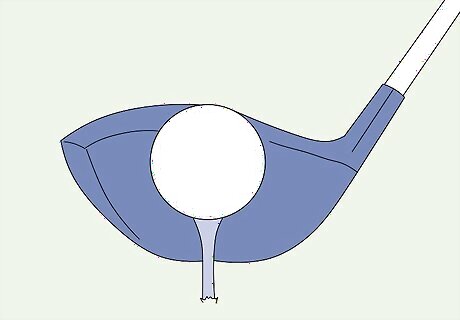
Hit the ball with the center of the club face to get the best impact. When your ball hits a different part of the club head, it may go in a different direction than you intended and only get a fraction of the power. Keep the club straight while you bring it forward so it makes contact with the ball in the center. Continue swinging forward through the ball so the club carries it forward and gets the most power. Learn how to slow down just a pinch to try and get that ball to land more center face upon impact. Avoid pulling the club up or leaning back when you swing forward since you may accidentally hit the ball lower on the head than you want. It may take a bit of practice to consistently hit the ball in the center of your club. Spend some time at a driving range to practice swinging through with each club you have.
Hitting Long Drives
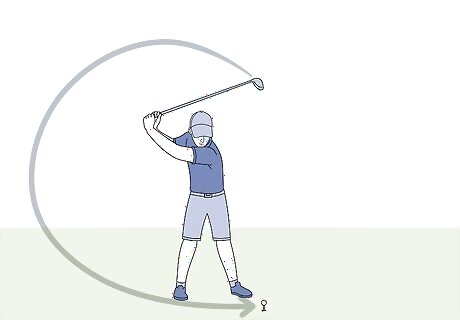
Use a driver with a higher loft to keep the ball in the air longer. The loft is the angle of the club head and affects the direction and the amount of time the ball flies. Look on the shaft or the club head to find the loft angle, and choose a driver that has an 11- or 12-degree loft when you’re first starting so your ball stays in the air longer after your swing. Try a few different lofts while you’re choosing a driver to see how it affects the distance of your drive. The loft near the top of the club head may be greater than the center, which can help increase the distance of your shot. For example, a driver with an 11-degree loft in the center may be closer to a 15-degree angle near the top.
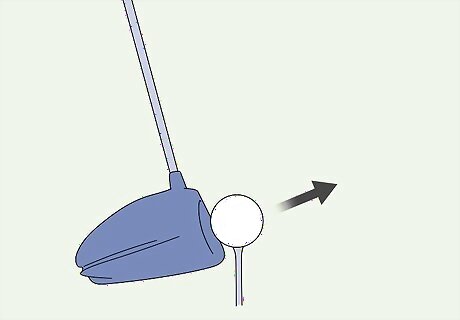
Tee the ball up higher to get less backspin. Place the head of your driver on the ground so you can see how tall it is compared to your tee and ball. Place the tee in the ground so half of the ball extends past the top of the head. That way as you swing, you hit near the top center of the head and get the best power from your shot and prevent backspin, which can make your ball bounce backward when it lands.Warning: You cannot tee up balls anywhere outside of the initial tee area at the beginning of the hole.
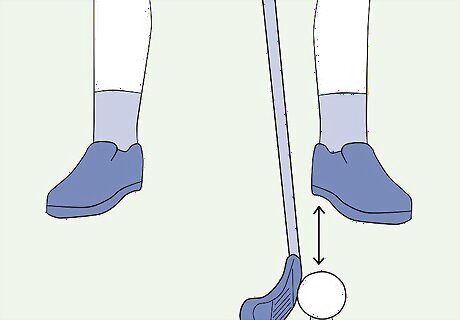
Keep the ball lined up with your front foot when you set up the shot. Keep the club fully extended in front of you while you’re lining up your shot and make sure your shoulders point in the direction where you want the ball to go. Position your front foot so it’s at about a 40-degree angle toward the hole, and stand so the ball lines up with your toes. Keeping your foot slightly angled toward the hole will help you rotate your hips farther so you get more power and distance from your swing.
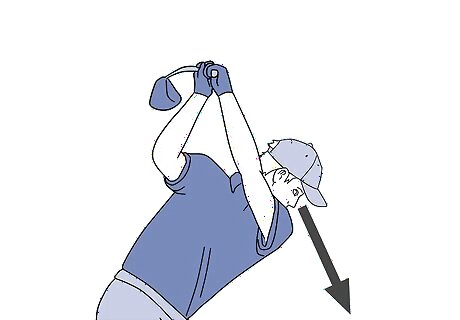
Avoid rushing your forward swing to get better control over the club. Keep your eye on the ball throughout your entire swing so you don’t miss it. Begin your backswing as normal so the club is behind your head and parallel to the ground. When you start your forward swing, bring the club down so your arms stay straight and maintain a steady comfortable speed. Follow through with completely with your swing to get the most loft and contact with the ball. Rushing through your swing can affect your posture and cause you to hit the ball with the wrong part of the club head.
Increasing Distance on Iron Shots
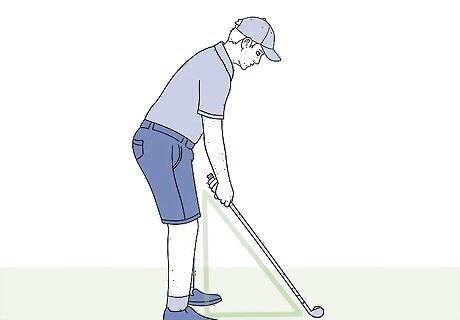
Position the ball inside your front foot while you’re swinging. Stand back from the ball so the club is fully extended in front of you and your arms are straight. Keep your feet shoulder-width apart and at a 90-degree angle from the hole. Stand behind the ball so it’s either centered between your feet or so the ball is slightly inside from your front foot. Point your shoulders in the direction you want the ball to go to help guide its path.
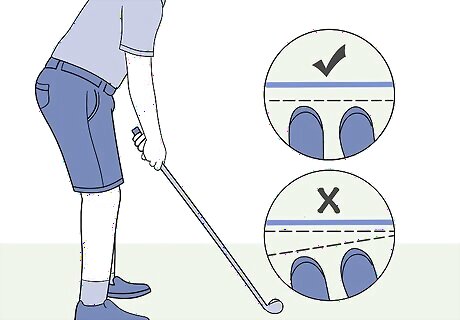
Square the club face to the ball to make full contact with the ball. Irons have more loft than drivers, but they tend to get more vertical height than distance. While you’re holding the club behind the ball, check that the bottom of the club points straight ahead so you don’t hit the ball at an angle. Hold the shaft of the club slightly toward your front shoulder to help decrease the loft of the club so your ball travels straighter. It may feel unnatural at first to hold your club toward the front of your body, but continue practicing your swing so it feels comfortable.Tip: If you hit the ball while the club face is at an angle, the ball could hook or slice and not go as far as you wanted.
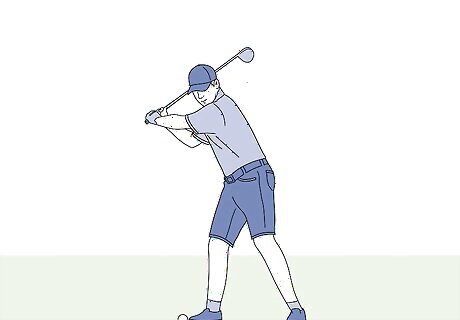
Point the club face toward the sky on the farthest point of your backswing. As you bring your club behind your head during the backswing, make sure the club is near parallel to the ground to get the maximum range of motion. Lift your head and look at the club head to make sure the face points flat toward the sky. This way, you can ensure that the club will come back down straight and hit the ball in the center of the face. Only check the direction of the club face while you’re first practicing your shots. Otherwise, you can throw off your rhythm or miss the ball during your forward swing.
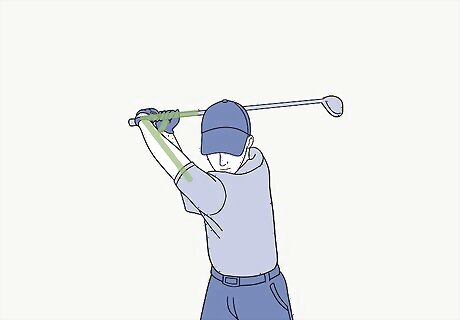
Hinge your back wrist forward as soon as you make contact with the ball. Keep your arms straight and wrists locked during your forward swing so the club comes down through its full range of motion. As soon as you hit the ball, snap your back wrist forward to help “scoop” the ball off the ground and get more power in your shot. Follow through with your swing entirely to ensure the shot goes as far as possible. Don’t “break” your wrist too early or else you may not hit the ball or it won’t go as far as you want it to.
Exercising to Improve Power
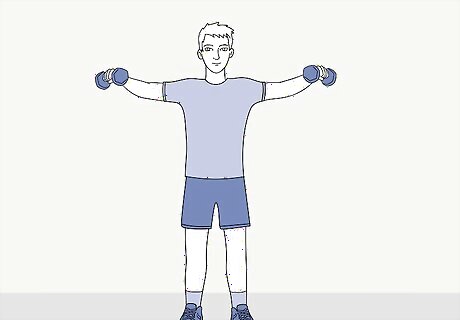
Work on wood chops to mimic a golf swing motion. Hold an 8–10 pounds (3.6–4.5 kg) dumbbell in the center with both hands and stand with your feet shoulder-width apart. Extend your arms so you’re holding the weight at an angle above your right shoulder. Keep your core tight as you bring the weight down across your body toward your left foot until you’re in a squatting position. Lift the weight back up above your right shoulder to complete a repetition. Aim to do about 2-3 sets of 15-20 reps. Increase the number of reps you perform when you start feeling comfortable with the exercise rather than increasing the weight. That way, you’ll tone your core and obliques more so you can repeat the movements faster and with more power.
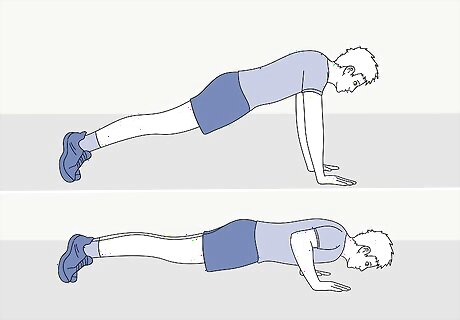
Do push-ups or sit-ups to improve your core muscles. Your core provides a lot of the power in your golf swing so it’s important to work it out. Practice doing 10-15 push-ups at a time to activate your core, back, and arms for a good all-around workout. If you want to only focus on your core muscles, try sets of 15-20 sit-ups. As you get more comfortable, increase the speed and number of repetitions you do to continue building power. If you want a more difficult exercise, get in a sit-up position and lift your shoulders off the ground to activate your core. Kick your legs like you’re riding a bicycle, and rotate your upper body to touch your knee with the opposite elbow.
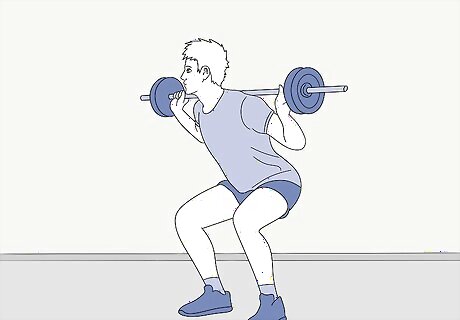
Try squats to build muscle in your legs. Stand with your legs so they’re about shoulder-width apart and so your back is straight. Bend your legs and lower your body until your knees are at a 90-degree angle, making sure your feet are flat on the ground. Hold the position for 1 count before raising yourself to the starting position. Continue doing squats until you complete 2-3 sets of 15-20 reps. After you feel comfortable doing bodyweight squats, start to incorporate dumbbells to help build more muscle. Most of your power during your golf swing comes from your lower body.
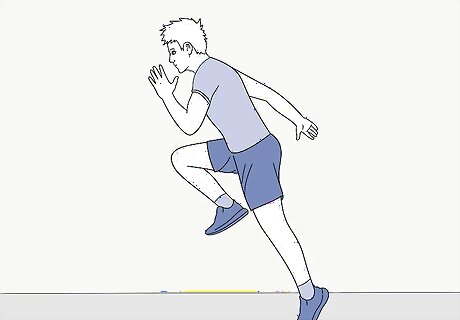
Practice cardio exercises to boost your stamina while playing. Your swing may get worse the longer amount of time you spend playing your round. If you notice your swing gets worse over time, work on building your stamina by going for a jog, riding a bike, or running on a treadmill. Continue your cardio exercises at least 2-3 times per week for at least 30 minutes at a time. Do your cardio training for a longer amount of time rather than increasing your speed once you feel comfortable. That way, you’ll feel comfortable through an entire golf game.


















Comments
0 comment